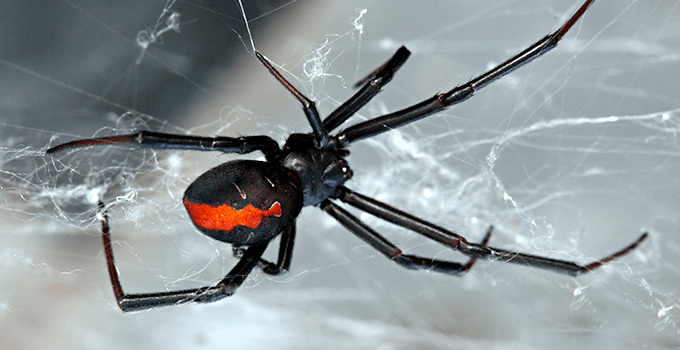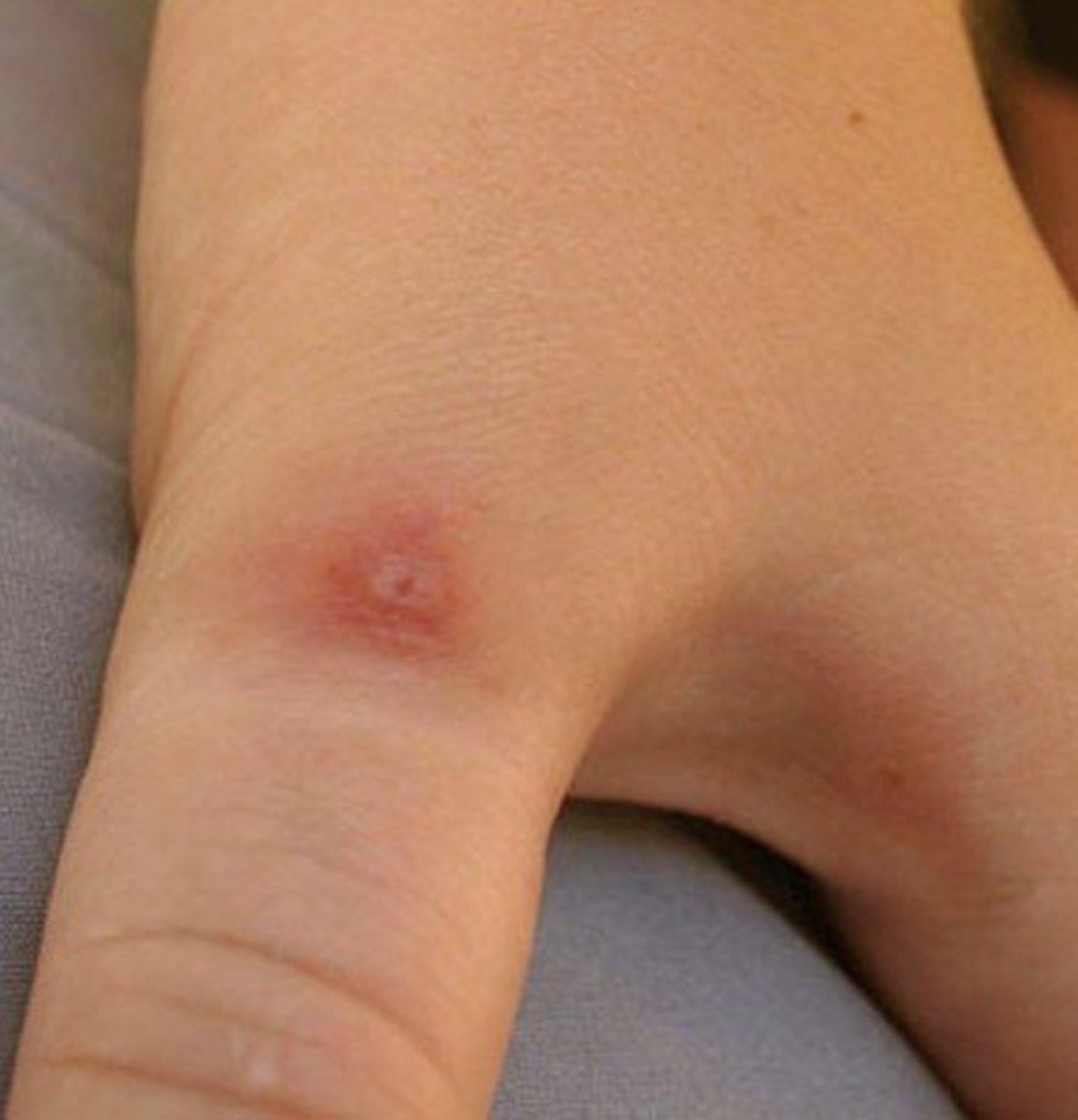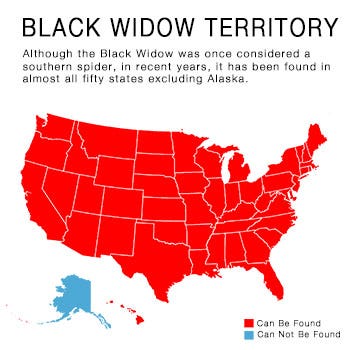 (1)
(1) (2)
(2)
- Source: Female black widow spiders have fangs containing venomous glands, which are toxic to humans. Black widow spiders can be found throughout the majority of the United States. There are three North American black widow spiders: the “southern black widow”, “northern black widow”, and “western black widow” (4).
 (5)
(5)
- Biotransformation: Black widow venom is a direct toxicant and does not need to undergo biotransformation to induce toxicity.
- Carcinogenicity: Venom released after a black widow spider bite does not have any known carcinogenetic effects.
- Mechanism of Action: The primary toxin found in the venom of the black widow is alpha-Latrotoxin. It binds to the receptors on presynaptic neurons and creates calcium-permeable channels within the lipid bilayers. The influx of calcium ions results in massive exocytosis of neurotransmitters, including acetylcholine, dopamine, norepinephrine, epinephrine, and glutamate, resulting in neuromuscular side effects (3).
- Target organs: Black widow spider venom primarily targets the skin and is a neuromuscular toxicant (causing pain, muscle rigidity, sweating, vomiting) if left untreated.
- Signs and symptoms of toxicity: A black widow spider bite may cause a local reaction, anaphylaxis, and/or a systemic reaction. (2)
- Local reaction:
- pricking pain at bite site
- redness and swelling
- itching
- Anaphylaxis:
- rash formation/hives
- shortness of breath
- weakness
- Systemic reaction:
- Abdominal pain/soreness – inducing nausea and vomiting
- Muscle cramps, joint pain
- Irritability/restlessness/feeling of malaise
- Sweating
- Fever/chills
- Elevation in blood pressure and heart rate
- Local reaction:
- Historical or unique exposures: Only 63 deaths were reported in the United States between 1950 and 1989 despite the extreme potency of the venom (4). This may be attributed to the small volume of venom released from a venom bite and the distribution of the venom throughout an adult body.
- Treatments: A known black widow spider bite is initially treated with wound care and tetanus prophylaxis. Pain caused by the bite may be treated with oral analgesics. In severe cases, opioids may be used for pain management and benzodiazepines for muscle spasm control. Antivenom exists for a black widow spider bite and is typically received well by most patients (3).
References:
- What To Do If You See A Black Widow Spider: Schendel Blog. Schendel Pest Services. (2019, November 8). https://www.schendelpest.com/blog/post/what-to-do-if-you-see-a-black-widow-spider
- Medicalcontent. (2021, June 4). Pictures, Symptoms, and Treatment of Black Widow Spider Bites. HubPages. https://discover.hubpages.com/health/black-widow-spider-bite-pictures-stages-symptoms-treatment
- Williams, M. (2020, August 10). Black Widow Spider Toxicity. StatPearls [Internet]. https://www.ncbi.nlm.nih.gov/books/NBK499987
- Black widow spider. Black widow spider – New World Encyclopedia. (n.d.). https://www.newworldencyclopedia.org/entry/Black_widow_spider
- Broadbent, B. (2020, May 26). Poisonous Bugs in Your Backyard. Medium. https://edibleinsects.medium.com/poisonous-bugs-in-your-backyard-cf963bdd1ff7